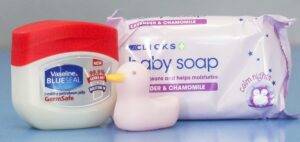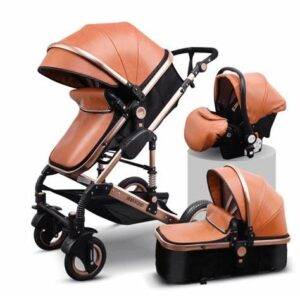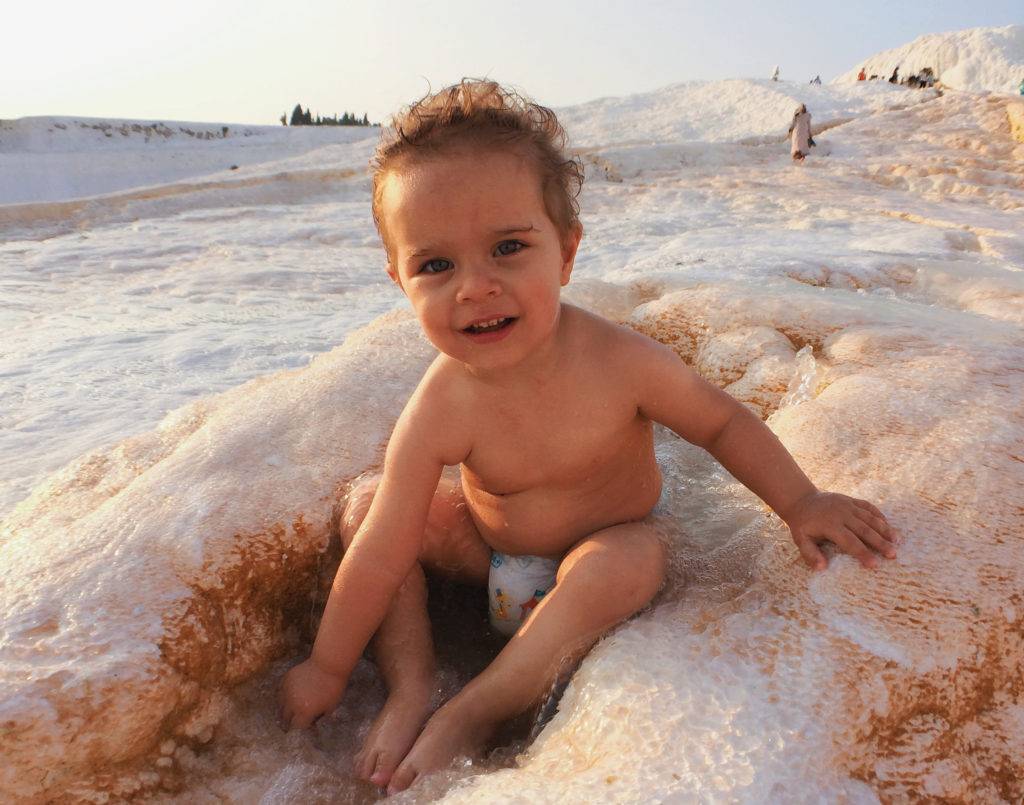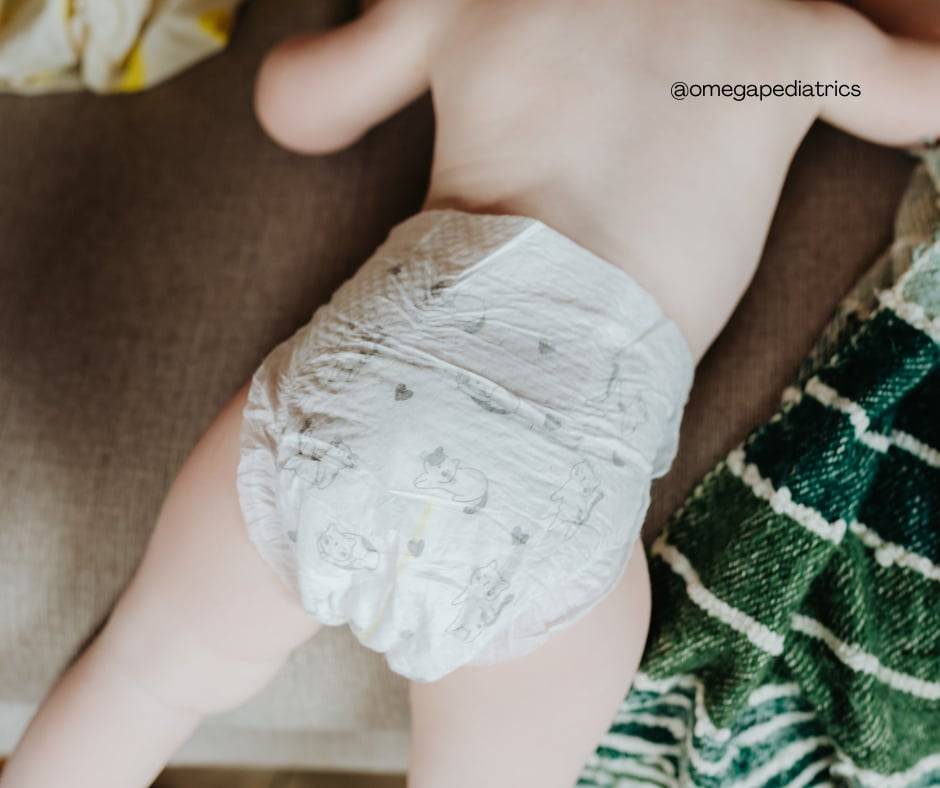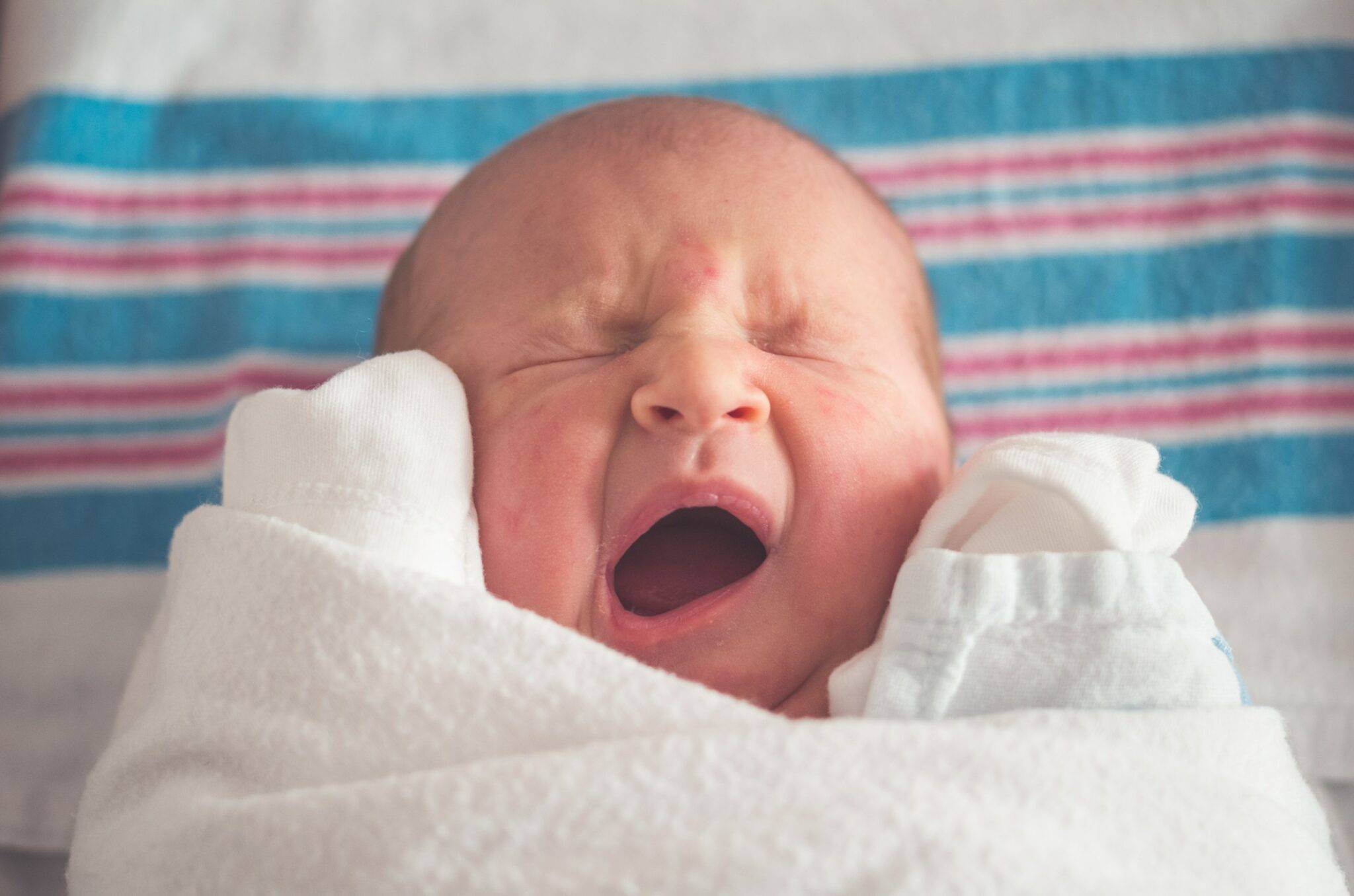Welcoming a newborn into the family is an exciting and joyous occasion. But it’s also overwhelming, especially for first-time parents. Knowing exactly what newborn baby needs makes the transition smoother and ensures you’re well-prepared for your little one’s arrival. To help you get started, here are ten must-have items for the first month.
1. Newborn Clothing Essentials
Getting ready for what newborn baby needs right from discharge from the hospital and onto their first month is paramount. Newborn clothing tops the list. Here are the must-have clothing to get started.
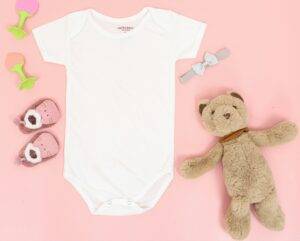
Onesies and Bodysuits: Your baby will spend a lot of time sleeping, so comfort is key. Onesies and bodysuits are the foundation of your baby’s wardrobe. Opt with snap closures at the bottom to make diaper changes much easier. Look for soft, breathable, and gentle fabrics for baby’s delicate skin. Short-sleeve and long-sleeve options will prepare you for any weather.
Sleepers and Pajamas: Sleepers and pajamas are essential for keeping your baby warm and comfortable during naps and bedtime. Footed sleepers are popular since they keep your baby’s feet warm without needing socks. Zippers and snaps are both good options. Zippers are quicker, but snaps are less likely to wake your baby during nighttime changes.
Hats and Mittens: Newborns lose a lot of heat through their heads, so a soft hat is important, especially if it’s cool. Mittens are useful for preventing your baby from scratching their face with their tiny, sharp nails. Look for mittens with elastic bands that can stay on but don’t leave marks on their wrists.
Socks and Booties: Socks and booties keep your baby’s feet warm, especially when not in footed sleepers. Ensure they are snugly fit and tight enough not to slip frequently. Soft, stretchy fabrics are best for a comfortable fit.
Outerwear: Depending on the season, you might need additional outerwear. A light jacket or a warm coat, and blankets for layering, help keep your baby cozy during outdoor trips. Babies can’t regulate their body temperature like adults, so dress them appropriately.
2. Diapers and Wipes
Nest to baby’s clothes, equally important to what newborn baby needs are diapers and wipes. Here are some pointers to note:
Choosing Diapers: Newborns go through a surprising number of diapers—up to 10 to 12 per day. Whether you choose disposable or cloth diapers, have an ample supply ready. Disposable diapers are convenient and easy to use, while cloth diapers are more economical and environmentally friendly in the long run. Some parents choose a combination of both.
Baby Wipes: Baby wipes are indispensable for diaper changes and cleaning up spills and messes. Choose wipes free of harsh chemicals and fragrances to avoid irritating your baby’s sensitive skin. Some parents prefer reusable cloth wipes, which can be washed with cloth diapers.
Diaper Creams: Diaper creams or ointments help prevent and treat diaper rash. Look for creams that contain zinc oxide or petroleum, creating a barrier to protect your baby’s skin from moisture. It’s a good idea to have a thick cream for treating rashes and a lighter ointment for daily prevention.
Diapering Accessories: A diaper pail with a tight-fitting lid is essential for containing odors between trash collection days. Look for one that uses special bags to help trap smells. A portable changing pad is also useful for diaper changes on the go. Some parents find a diaper caddy helpful for organizing diapers, wipes, and creams, making diaper changes more efficient.
3. Swaddles and Blankets
To complement what newborn baby needs in terms of clothing are swaddles and blankets. In addition to clothing, these items are important for warmth and comfort. Also for protection from outdoor elements during baby’s outings.

Swaddling Benefits: Swaddling helps your baby feel secure and sleep better by mimicking the snugness of the womb. It also prevents the startle reflex from waking your baby. Choose soft, breathable swaddling blankets that are easy to wrap. Cotton muslin is popular since it’s lightweight and breathable, perfect for year-round use.
Types of Swaddles: There are several types of swaddles available. Traditional swaddling blankets are versatile and can be used for other purposes, such as a nursing cover or a burp cloth. Swaddle sacks with Velcro or zipper closures are convenient and ensure a snug fit, reducing the risk of your baby breaking free at night.
Receiving Blankets: Receiving blankets are smaller and thinner than regular blankets and have many uses. They can be used for swaddling, burp cloths, tummy time, or as a light cover in a stroller. Having a few of these on hand is incredibly useful.
Sleep Sacks: You might transition from swaddling to using a sleep sack as your baby grows. Sleep sacks are wearable blankets that keep your baby warm without the risk of loose blankets in the crib. They come in various thicknesses and materials, suitable for different seasons.
4. Feeding Supplies
What newborn baby needs never overlook the feeding supplies. The essentials for your newborn’s feeding is an all-time concern for moms and caregivers.
Breastfeeding Essentials: If you’re breastfeeding, certain supplies can make the process more comfortable and efficient. A good nursing pillow supports you and your baby, making feedings more comfortable. Nursing pads are useful for absorbing leaks between feedings, and nipple cream helps soothe any soreness or cracking.
Breast Pump: A breast pump is useful if you plan to breastfeed. It allows you to express milk on hand for bottle feedings, gives you a break, and helps increase milk supply. There are many options available, from manual pumps to electric pumps.
Bottle-Feeding Supplies: For bottle-feeding, whether with formula or expressed breast milk, you’ll need bottles and nipples. Newborns start with slow-flow nipples to avoid choking on too much milk at once. A bottle brush is essential for keeping bottles and nipples clean.
Formula: If you’re using formula, consult your pediatrician for the best option for your baby. Have a few cans of formula on hand, and a formula dispenser for easy, on-the-go feedings. Follow the preparation instructions precisely to ensure your baby gets the correct nutrition.
5. Baby Bathtub and Toiletries
Baby Bathtub: Bathing your newborn can be a delightful bonding experience but it requires the right equipment. A small, safe baby bathtub is essential for those first baths. Look for a tub with a non-slip surface and a built-in seat or sling to support your baby.
Baby Soap and Shampoo: Newborn skin is sensitive, so use gentle baby soap and shampoo. Look for products free of fragrances, dyes, and harsh chemicals. Baby washcloths and sponges are also helpful for gently cleaning your baby’s skin.
Baby Lotion: After bath time, apply a gentle baby lotion to moisturize your baby’s skin and prevent dryness. Choose a product that is hypoallergenic and free from irritants.
Bathing Accessories: A rinse cup helps you gently pour water over your baby without getting soap in their eyes. A soft towel, preferably with a hood, is perfect for quickly wrapping your baby after getting off to keep them warm and dry. Bath thermometers ensure the water is at a safe temperature.
6. Crib and Bedding
Crib Safety: Your baby will spend a lot of time sleeping, so having a safe and comfortable place for them to rest is crucial. A sturdy crib with a firm mattress is essential. The crib meets current safety standards, which include appropriate slat spacing and the absence of drop-side rails.
Fitted Sheets: Use fitted crib sheets that fit snugly around the mattress. Loose bedding, including blankets, pillows, and stuffed animals, should be avoided to reduce the risk of suffocation. Having multiple fitted sheets on hand is helpful for those inevitable middle-of-the-night messes.
Sleep Sacks: Instead of loose blankets, consider using a sleep sack. These wearable blankets keep your baby warm without the risk associated with loose bedding. They come in various materials, suitable for different seasons and temperatures.
Bassinet: Some parents choose to use a bassinet for the first few months. Bassinets are smaller than cribs and placed next to your bed for convenient nighttime feedings and comfort. Ensure the bassinet is stable and meets safety standards. Learn more about bassinets in this article: How Long Can a Baby Safely Use a Bassinet: 6 Essential Factors to Consider
7. Car Seat
Choosing a Car Seat: A car seat is a non-negotiable item for bringing your baby home and traveling safely. Choose a rear-facing infant car seat that meets safety standards and is properly installed in your vehicle. Many hospitals require you to have a car seat before they discharge your newborn.
Car Seat Installation: Proper installation is critical for the car seat to protect your baby. Follow the manufacturer’s instructions carefully, and if possible, have it checked by a certified car seat technician. Some fire stations and hospitals offer this service for free.
Car Seat Accessories: Head-and-body supports, these accessories should keep your baby comfortable while settled in the car seat. These should meet safety standards as approved by car seat manufacturers.
Car Travel Tips: Never place a car seat in the front seat of a vehicle with an active airbag. Always secure the car seat in the back seat, preferably in the middle, which is the safest spot. Ensure the harness is snug and properly positioned on your baby.
8. Stroller
Choosing a Stroller: A stroller makes baby outings more convenient. Look for one that’s lightweight, easy to fold, and has a comfortable seat for your baby. Some strollers come with car seat adapters, making it easy to move your baby from the car to the stroller without disturbing them.
Stroller Features: Consider strollers with a canopy to protect your baby from the sun and rain, a storage basket for carrying baby essentials, and adjustable handles for comfort. Swivel wheels make maneuvering easier, and a reclining seat allows your baby to nap while in tow.
Travel Systems: These are strollers with a compatible infant car seat. These systems are convenient since the car seat snaps directly into the stroller frame. This is especially useful during the baby’s first few months when they fall asleep in the car.
Stroller Safety: Ensure the stroller has a five-point harness for your baby’s security and safety. Always use the brakes when you’re not moving to prevent the stroller from rolling away. Regularly check for wear and tear on the wheels and frame to ensure the stroller remains safe.
This article helps you make an informed choice for your baby’s stroller: The Top 10 Strollers Every New Mom Should Consider
9. Pacifiers
Choosing Pacifiers: This item is essential to soothe your baby and provide comfort between feedings. Choose pacifiers that are sized for newborns and made of safe, BPA-free materials. Some babies prefer specific shapes or brands, so you try a few different types to see what your baby likes best.
Pacifier Use: Pacifiers help reduce the risk of sudden infant death syndrome (SIDS) during naps and bedtime. If breastfeeding, wait until your baby is one month old to introduce a pacifier to avoid nipple confusion.
Pacifier Safety: Ensure pacifiers are one-piece construction to avoid choking hazards, and regularly inspect them for signs of wear or damage. Sterilize pacifiers before the first use and clean them regularly. Avoid attaching pacifiers to your baby with strings or cords, as these pose a strangulation risk.
10. Health and Safety Items
Baby Thermometer: A reliable baby thermometer is essential for monitoring your baby’s temperature. Digital rectal thermometers are considered the most accurate for newborns, but ear and forehead thermometers are also useful. Read the instructions carefully to ensure accurate readings.
Baby Monitor: A baby monitor gives you peace of mind by allowing you to keep an eye (or ear) on your baby when you’re not in the same room. There are types available, from audio-only monitors to advanced video monitors with features like night vision and two-way communication.
First Aid Kit: A basic kit should include infant acetaminophen, a nasal aspirator, bandages, and a digital thermometer. It’s also helpful to have saline drops for nasal congestion and a baby-friendly nail clipper.
Safety Items: Consider baby-proofing your home before your baby becomes mobile. Outlet covers, cabinet locks, and corner protectors keep your baby safe as they explore their surroundings.
Prepare for Your Baby’s Arrival: Have What Newborn Baby Needs
Knowing what a newborn baby needs helps you feel more prepared and confident as you embark on this new journey. Have these ten must-have items ready for the first month, so you can focus on enjoying and bonding with your new baby.
By ensuring you have these essentials, you’ll be well-equipped to handle the first month with your newborn, making it a special and memorable time for your growing family.

